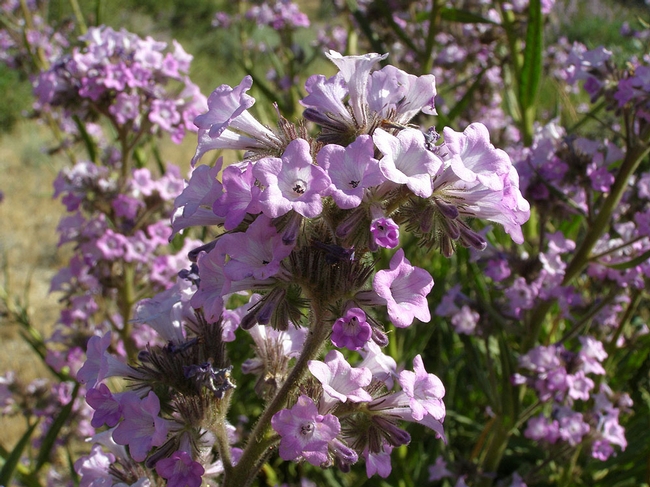Look at (but don't touch!) this pretty but dangerous California native
Poodle-dog Bush is a California native plant and a common fire follower. This attractive plant has reached very high densities in recently burned areas, and is an important early colonizer that can help these areas recover. Look but don’t touch (or smell or collect) though, because this plant can cause serious allergic reactions for some people.
A member of the forget-me-not family (Boraginaceae), the poodle-dog bush, Terricula parryi, is a subshrub (with flexible, slightly woody stems) commonly found in disturbed areas, but rarely seen under undisturbed conditions. It can grow almost 10 feet tall and has purple bell-shaped flowers. It grows in recently burned areas of several vegetation types including forest, oak woodland, chaparral, and even riparian areas. However, it is a relatively short-lived and will decrease in numbers two to five years after the fires as other native shrubs and trees recover.
Contact with this plant can cause severe skin irritation with swelling, itching and raised blisters similar to those caused by poison oak. It’s best to avoid it, but if you need to be in infested areas make sure to wear long pants and sleeves and to wash clothes and gear soon after contact. Rinse skin with cool water as soon as possible. It can take from 12 to 36 hours for the rash to appear, and symptoms can persist for up to two weeks. If symptoms do appear, cool compresses, calamine lotion or over-the-counter hydrocortisone creams may provide some relief. Fluid from the blisters will not spread the rash, but it’s best to refrain from scratching if possible, as open sores can be prone to other skin infections.
This plant is now extremely common in the Station Fire burn area in Angeles National Forest and in other Southern California wildlands that have had recent fires. It’s another good reason to respect all trail and road closures. For more information about the Station Fire closure areas and recovery, visit http://www.fs.usda.gov/angeles.

Poodle-dog bush, Kentucky Springs Canyon, Angeles National Fores. (Photo: BonTerra Consulting, Inc.)


The article mentions a 2 -5 year time frame but I see Poodle Dog EVERYWHERE in ANF and it still seems to be growing years after the Stanton Fire. Is the 2 - 5 years a general estimate of the time frame that the forest should bounce back?
Posted by lisa on January 21, 2016 at 7:22 PM